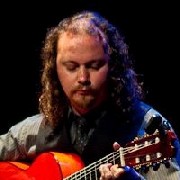Welcome to one of the most active flamenco sites on the Internet. Guests can read most posts but if you want to participate click here to register.
This site is dedicated to the memory of Paco de Lucía, Ron Mitchell, Guy Williams, Linda Elvira, Philip John Lee, Craig Eros, Ben Woods, David Serva and Tom Blackshear who went ahead of us.
We receive 12,200 visitors a month from 200 countries and 1.7 million page impressions a year. To advertise on this site please contact us.
|

|
|
RE: Compas elasticity and accented beats
|
You are logged in as Guest
|
|
Users viewing this topic: none
|
|
Login  | |
|

   
dararith
Posts: 120
Joined: Jun. 4 2010
From: Oakland, CA

|
 RE: Compas elasticity and accented beats (in reply to Ron.M) RE: Compas elasticity and accented beats (in reply to Ron.M)
|
|
|
quote:
If you think about it, that's exactly how you would feel about accompanying Blues if you had little experience of it.
I've never done blues before, but this game makes it sound all the more interesting. =D
quote:
First accompany only apagado, no chords just muted strumming. When you can do this while listening and don't get lost, try the same keep muted but only give tonos on count 3 or 10, then go back to muted strumming.....from there you should see where you were getting messed up "listening" to the cante melody for its intrinsic rhythm. You only need to give tonos on 3 or 10, and you will see it always works.
Are these the "KING" notes your speak of? Or rather, I should play the King notes on these beats...
Internalizing the compas and hitting it on the mark is fun and can be challenging to do. Keeping the rhythm with my fingers alone just feels like a losing battle. Your method of playing on beats 3 and 10 seem to work really well since it forces me to find other means of keeping rhythm and finding the groove (foot, head, shoulder...anything other than memorized right hand strummings). Thanks!
|
|
|
|
REPORT THIS POST AS INAPPROPRIATE |
Date Jan. 21 2011 0:43:48
 |
|
 New Messages New Messages |
 No New Messages No New Messages |
 Hot Topic w/ New Messages Hot Topic w/ New Messages |
 Hot Topic w/o New Messages Hot Topic w/o New Messages |
 Locked w/ New Messages Locked w/ New Messages |
 Locked w/o New Messages Locked w/o New Messages |
|
 Post New Thread
Post New Thread
 Reply to Message
Reply to Message
 Post New Poll
Post New Poll
 Submit Vote
Submit Vote
 Delete My Own Post
Delete My Own Post
 Delete My Own Thread
Delete My Own Thread
 Rate Posts
Rate Posts
|
|
|
Forum Software powered by ASP Playground Advanced Edition 2.0.5
Copyright © 2000 - 2003 ASPPlayground.NET |
6.298828E-02 secs.
|


 Printable Version
Printable Version









 New Messages
New Messages No New Messages
No New Messages Hot Topic w/ New Messages
Hot Topic w/ New Messages Hot Topic w/o New Messages
Hot Topic w/o New Messages Locked w/ New Messages
Locked w/ New Messages Locked w/o New Messages
Locked w/o New Messages Post New Thread
Post New Thread